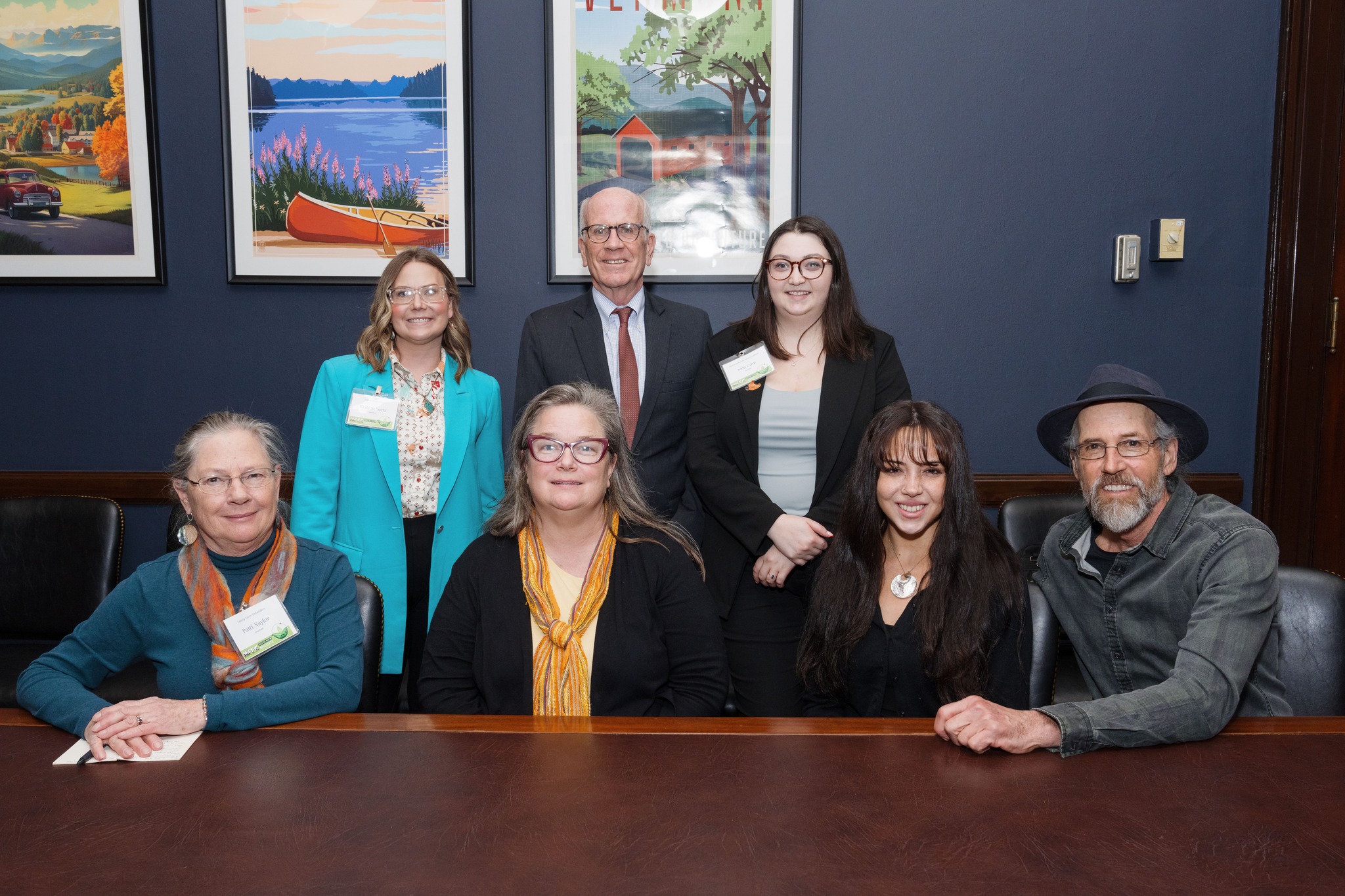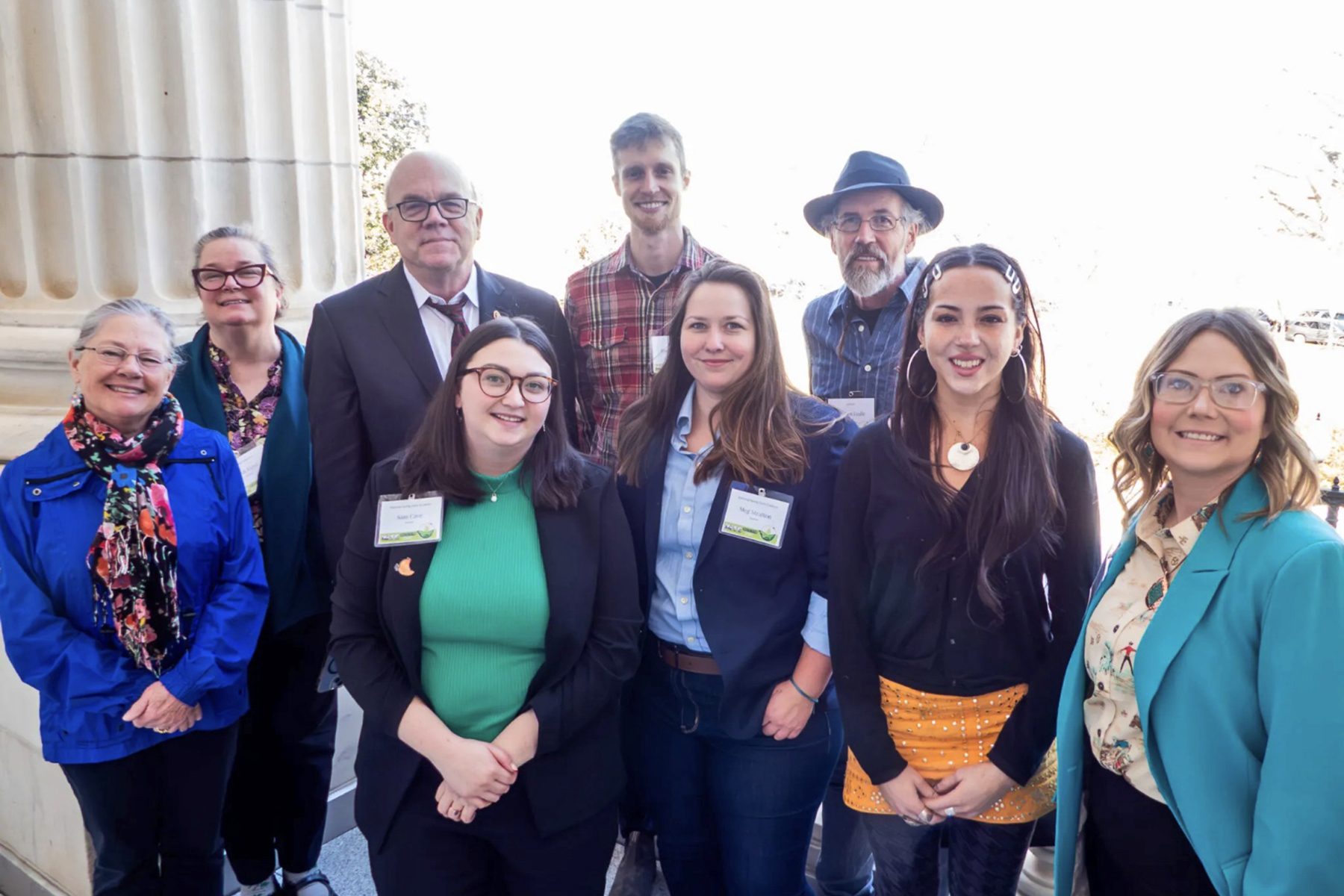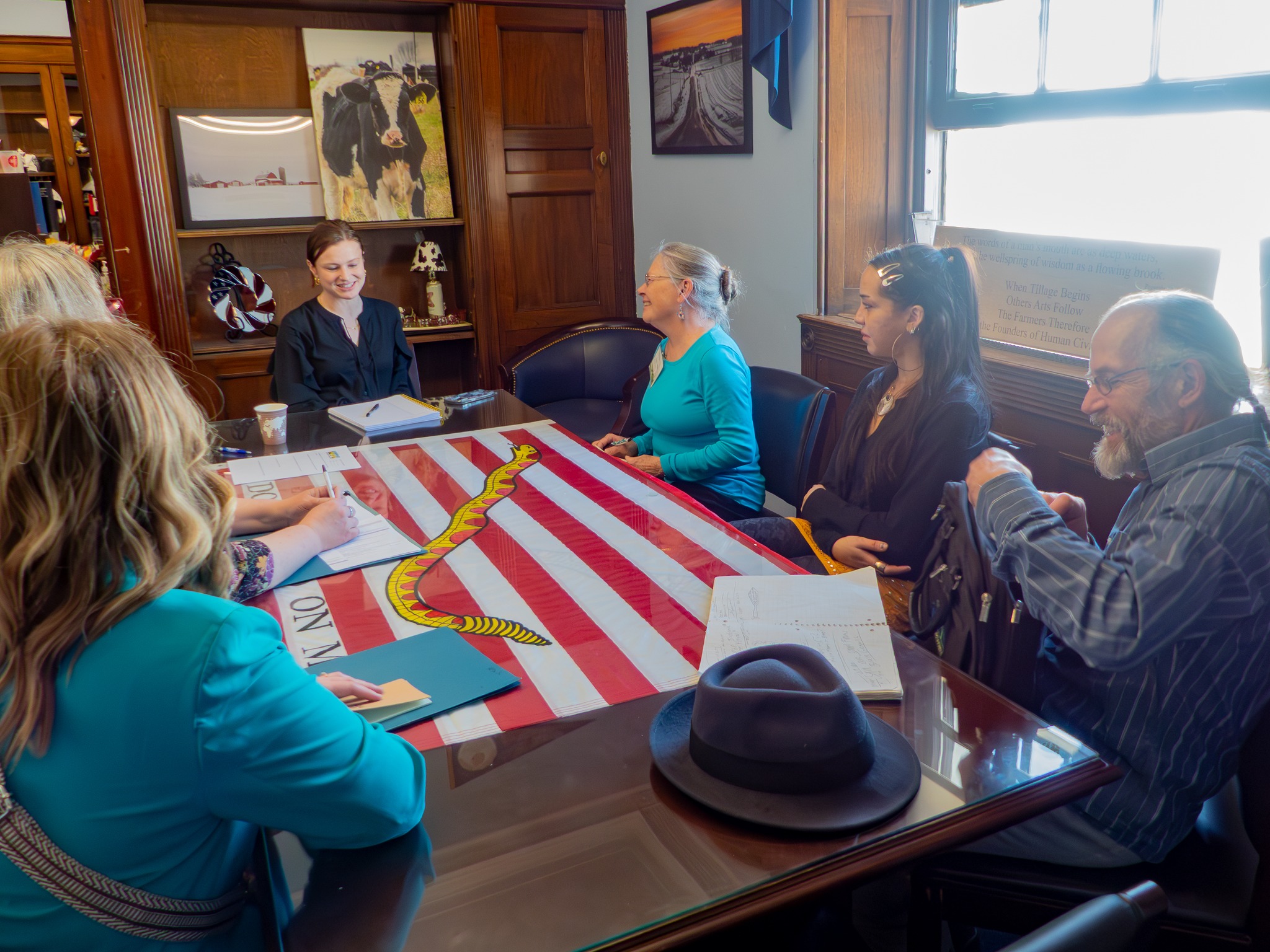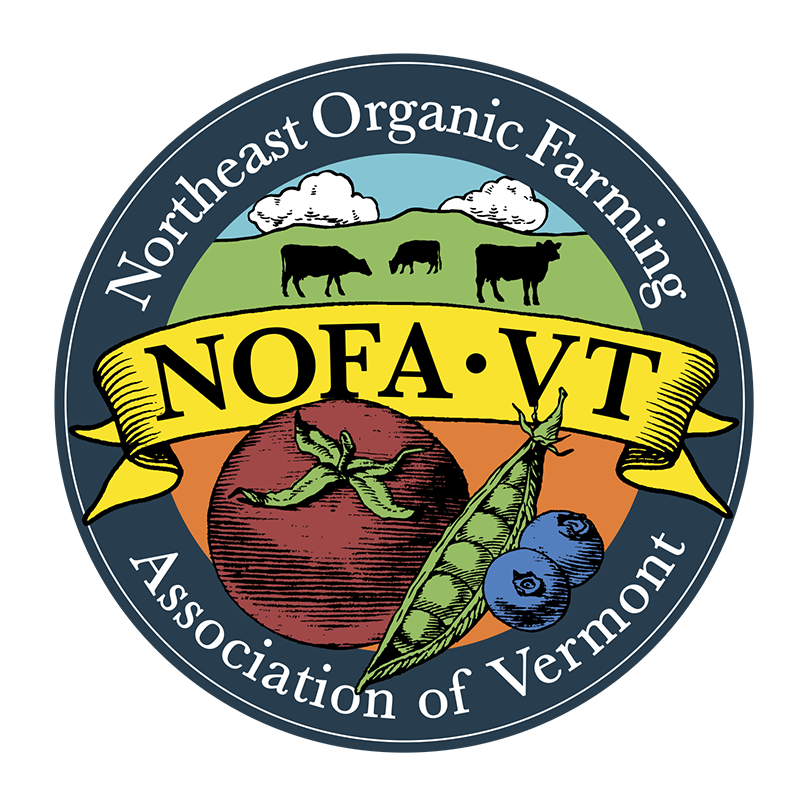April 11, 2025
Back in December, when Grace Oedel, the director of NOFA-VT, asked me if I would consider being a farmer-representative for the organization at the annual National Family Farm Coalition (NFFC) DC-Fly-in held in February, I was honored to have the opportunity to step up and speak up for small farmers and the earth. But that was all in some other country in another time.

On January 20th, 2025, at Donald J. Trump's second inauguration ceremony, a group of tech-industry billionaires were in attendance with the best seats in the White House. For the first time, the men of wealth and power stood in the light of day, revealing a reality that has always existed but tended to remain behind the scenes and in the shadows. In his recent "Fight Oligarchy" tour across the US, Vermont Senator Bernie Sanders informed his audiences that currently just three multi-billionaires occupy more wealth than the bottom half of the U.S. population. These three men are Elon Musk, Jeff Bezos, and Mark Zuckerberg, all of whom had the most prominent ringside seats at the spectacle of Trump's swearing in.
Today in America, it seems as if the last strands of our grip on democracy are slipping out of our hands. An authoritarian president has gained control over the other two branches of our federal government. A hostile corporate takeover of the U.S. government by the world’s richest men is unfolding in real time. In the second Trump term, the president has been granted immunity from prosecution by the courts and usurped the power of the purse by canceling programs and putting spending freezes on funds already approved through legislation.
One of the important markers on the Economist’s Democracy Index is the civil liberty to form associations that can then petition or have the power to lobby for their causes. In the United States, this liberty has been severely tested but has persisted. The opportunity to claim that agency inspired me to join the delegation of farmers, ranchers, and fishers that traveled to Washington D.C. to meet with congressional staffers and representatives to advocate for such issues as fair pricing for farmers, food sovereignty, and equitable access to farm land and farm credit. We were sponsored by NFFC. As long as citizens still have this kind of agency there may be hope yet for our failing democracy.
When I went to D.C. as a farmer-representative for NOFA-VT, I was accompanied by my 17-year-old daughter, Maeve, who just happens to be studying the history of democracy at her high school. When you spend as much time as I do on the farm, it's always a little disorienting to travel. But after the last six weeks of what long-time advisor to the president Steve Bannon aptly describes as, "muzzle velocity" assaults on all fronts to destabilize and dismantle key agencies of the federal government, traveling into D.C. was more like being in a menacing episode of the Twilight Zone. I had to ask myself, what am I even doing here?

But when all the NFFC delegates and staff got together on our first afternoon at the Presbyterian Church to meet up and strategize, and after I heard all the introductions of these farmers, fishers, and ranchers from all across the country telling who they were and why they were showing up, I felt so grateful for their passion for what they do and their courage and willingness to step up to defend it, I knew we were in the right place at the right time. Congresswoman Alma Adams of North Carolina, a long-time member of the Ag Committee, graciously joined us to share her view on the moment and the prospects for the Farm Bill. She told us there was a time to show up, a time to speak up, and sometimes there is a time to, "cut up"—and it seems that such a moment has arrived. A moment to ask, "What would John Lewis do?"
For the Fly-In, Maeve and I were part of the Dairy Team. We had a dairy farmer on our team from a fourth-generation South Dakota farm. Farmer Kelly Scheetz spoke of how her husband's grandparents had raised 15 children on the farm, but now they were having a hard time supporting a family of five. Last year, after two months of getting a milk check in which all their profits went to cover transportation costs, they said "enough" and told the processor to please stop sending the hauler. Now they are selling raw milk to neighbors and developing their value-added, first-in-the-state cream line yogurt business, with plans to create a mobile processing plant that could be shared with other area farms. Sarah Lloyd from Wisconsin recounted that she and her husband had recently sold off their 450 cows because, with operational costs constantly rising, they could no longer make the multi-generational farm business pay. They were holding onto the land and making plans to introduce elements of agroforestry into the farm landscape. And Patti Naylor, an organic farmer from Iowa, related how she was raised on a small diversified farm before they were described that way because that was just what a farm was. She described how her brother still operates the family farm, but the cows that once served as the fertility engine of biological soil health are all gone, replaced with commodity crops. These powerful women farmers are active with local and national farmer-led organizations.

Each Fly-In Team was accompanied by an NFFC staff member. We were fortunate to have communications and media specialist Samantha Cave on the Dairy Team, who somehow managed to combine fun with efficient time management. The folks at NFFC did an incredible job orchestrating the entire event. The National Family Farm Coalition is proposing a comprehensive reform of the dairy sector through the Milk from Family Farms Act. The NFFC proposal could radically reform the dairy sector through a non-monetized national quota system, incentivizing small and mid-size farms and gradually deconsolidating the concentrated animal feeding operations (CAFOs).
This proposed Act is still in search of a champion. We visited offices that the NFFC had already identified as being potential allies for this bill, or to new members who represent districts with high concentrations of dairy farms. And of course, when we spoke with staffers, we all addressed how the freezes on USDA funding for programs and grants are directly impacting us, our farm neighbors, and our trusted technical assistance partners. All the staffers we spoke with—from both parties—expressed a sense of shock and dismay at the freezes on USDA programs directly impacting their farmer constituents. We also got a sense that everyone was feeling in the dark about which cuts were coming next, and were often reduced to getting their updates from the media rather than directly from the White House. Most everyone is familiar with the concept that times of crisis present both danger and opportunity. With these betrayals of signed contracts, the Trump administration is literally killing farms. With all those folks out in farm and ranch country feeling hung out to dry, this might be a moment when seeds can be sown for a bi-partisan agrarian uprising.
We heard from a couple of our New England representatives' staffers that if Welch's office takes up the Milk from Family Farms Act, they would follow suit. We visited Vermont Senator Peter Welch's office as our last stop on Thursday afternoon. Senator Welch showed up and spent a generous amount of time with our dairy team, along with staffers Evelyn Vivar and Darryl Alexander. Many of the representatives seem most responsive to requests for a meeting when they know their own constituents are going to be present, and Senator Welch was no exception. It probably didn't hurt that for over thirty years, he lived in the same town where our farm is located, and even used to get milk from the family that owned the farm before us. It's a hallmark of our "Brave Little State" that engaged citizens can gain access to the ears of their elected representatives. Senator Welch stated that he has, "always supported supply management." He assured us that his staffer Darryl was working on the bill’s language. Of course, the Senator is also obliged to meet with lobbyists representing the interests of the large farm operations. Given that reality, I think the Dairy Team left the meeting encouraged to hear the Senator confirm that his office is engaging with the language of the Milk from Family Farms Act. We have a good incentive to continue following up with Senator Welch's office and to circulate the bill’s language among farmers and rural organizations in our respective regions.
At all the offices we visited, I did my best to convey the grim details of the current dairy crisis in Vermont (and the country in general). Ours is a story of rapid consolidation. Back in 1996, when my wife Kerry and I first started buying heifers, there were 2500 dairy farms in the state of Vermont. Today there are fewer than 450. Yet, the state is still producing the same amount of milk and has approximately the same number of cows. The dairy sector still makes up 80% of agricultural sales in the state (and occupies 80% of the agricultural land), but all of that production is increasingly concentrated into large CAFO-style operations located in a couple of counties. The small and medium-sized farms that used to dot the countryside all across the state are quickly disappearing, with huge negative ramifications for local economies and culture. Even more alarming has been the conversion of farm land to development. We have lost 30% of our prime agricultural lands since 1987–that’s more than 100,000 acres. The American Farmland Trust reports that Vermont and New Hampshire collectively lose 35 acres of rural land to conversion daily. All this is taking place in the context of a rapidly destabilizing climate system and loss of biodiversity.
We cannot expect farmers who are forced to have annual operating debt and long-term debt on infrastructure and assets to be innovators and risk-takers. Dairy farmers invest enormous amounts of capital in equipment, infrastructure, inputs, and labor. They have seen profit margins flat-lined for 50 years while operating costs have skyrocketed. Meanwhile, equipment manufacturers and purveyors of copyrighted seeds, fertilizers, and pesticides rake in record profits. If agriculture continues to operate within the free market, it needs to be with built-in safety nets.
In recent history, the state and federal government’s response to the crisis in the dairy industry has been to fund projects that prop up the existing model. One example of this would be the promotion of on-farm methane biodigestors as a "green solution" for generating electricity. Constructing these high-tech facilities requires huge expenditures and an enormous amount of concrete and steel. This energy generation model depends on pairing electric utilities with large farms, where a minimum of 800 cows (often thousands) are housed in year-round confinement. This is all heading in the wrong direction.
Dairy farmers need to be offered viable options to reduce the number of cows, get them back out on the land grazing, and diversify their operations. Farmers need technical assistance to grow innovative specialty crops such as vegetables, fruits, nuts, mushrooms, hemp, medicinal and culinary herbs, small grains, pseudo-grains, and legumes for human consumption. Additionally, elements of agroforestry can be integrated into annual cropping systems, with perennial crops enhancing diversity and resilience. All of these incentives aim to re-establish a regional food system. Consumers ought to be able to buy a full diet of food grown within one hundred miles of where they live. We don't need more California lettuce coming to us on jet planes, but rather healthy, organic, and bio-regionally produced food eaten with the seasons.
When I entered into a farm apprenticeship back in 1992 with the idea of becoming a farmer, I did so because I felt that becoming a small diversified organic farmer in the United States at that time was the most potent form of non-violent direct action to change the system that I could undertake. I still believe that is true and that this kind of farming represents our last best hope in surviving climate change. Every small farm and woodlot managed with organic and regenerative practices is like a stone tossed in a pool. There is no telling how far the ripple effects of such efforts will travel and how they might help raise ecological awareness and give impetus to the systemic changes we so desperately need. Although we are just one small farm, if soil health practices are to be adopted widely, it will be a grassroots movement of forward-thinking land caretakers who will be the catalysts. We are trying to implement practices on the foundational principle that the best adaptation is mitigation. We are part of a larger regional, national, and international grassroots agroecological movement aiming to create resilient, just, and equitable, re-localized and sovereign food systems. This re-rooting and reconnecting to the living earth offers an opportunity to turn things around and make human progress toward a regenerative global civilization.
Thanks to NFFC, La Via Campesina, and all of the partner organizations who came together to help farmers, fishers, and ranchers and their allies stand united in these challenging times!

